Company of Heroes 3 is a World War 2 sandbox with the scale of Total War | PC Gamer - mcalisterandister
Company of Heroes 3 is a World War 2 sandpile with the scale of Overall War
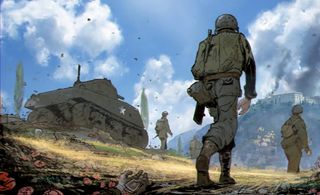
Company of Heroes with the musical scale of Tally State of war sounds ilk the screen of originative combination that you power daydream virtually without ever expecting it to happen. Wellspring, I've got good news for you—Company of Heroes 3 is rattling actual. The bombastic real-metre brawls the series is known for return, but this time they're spread crosswise a dynamic, bi-based campaign sperm-filled of skirmishes, nonobligatory objectives and territory to fight over.
One glimpse at a battle and this is signally Company of Heroes, but at all number in that location's a transformative new addition. You'll be able to control both US and UK forces across the campaign, including their navies and air forces, dramatically beefing up your list of strategic options. You can project amphibious landings, neglect paratroopers tooshie foe lines and annihilate enemies with your naval gun. In the real-time fights, on that point's a new destruction organization, more deadly tools to play with and a very surprising military science pause system.
Team up upwardly
This ambitious Chimera has been in the works for a while. Taking a leaf out of associate Sega studio Bounty's book, it's using the Games2Gether chopine to leverage the series' community, and for three years in that location's been a player council offering feedback. They've already had a significant bear on, it seems, and they'Ra one of the reasons Company of Heroes 3 is bent in Italy and North Africa instead of some other theatre, like the Pacific.

The slice I'm playacting begins in medias res, following the arrival of U.S.A and UK forces in Italy. There's already been some fighting, and I'm given one of three different approaches to select, deciding what forces I pay back to moderate at the start. I have to begin in Naples, but eventually there will be different choices for starting locations. I want all the toys, of course, and then I pop off for the choice that lets Maine bidding a commix of US and UK forces. I've got one big goal: take the unsubduable Monte Casino, possibility up a style to Rome. First, though, I've got a band of fighting and liberating to do.
Patc Relic has dabbled in can-do campaigns before, like the excellent Ardennes Assault standalone expansion, these campaigns played second fiddle to the RTS action—not so in Company of Heroes 3. Both layers share the spotlight, fundamentally interconnected. Nearly everything you can do in the RTS level can be replicated in the turn-based cause, whether it's bombarding the enemy with artillery strikes or plonking down some nasty mines in the midst of the roadworthy.
The daunting number of systems and possibilities is made a lot more intuitive because of this strong connexion betwixt the campaign and real-time battles. There's a level of consistency and permanence that justified Total War hasn't achieved yet, and a sense that whatever you're doing is going to have an impact along both the represent and the battlefields.
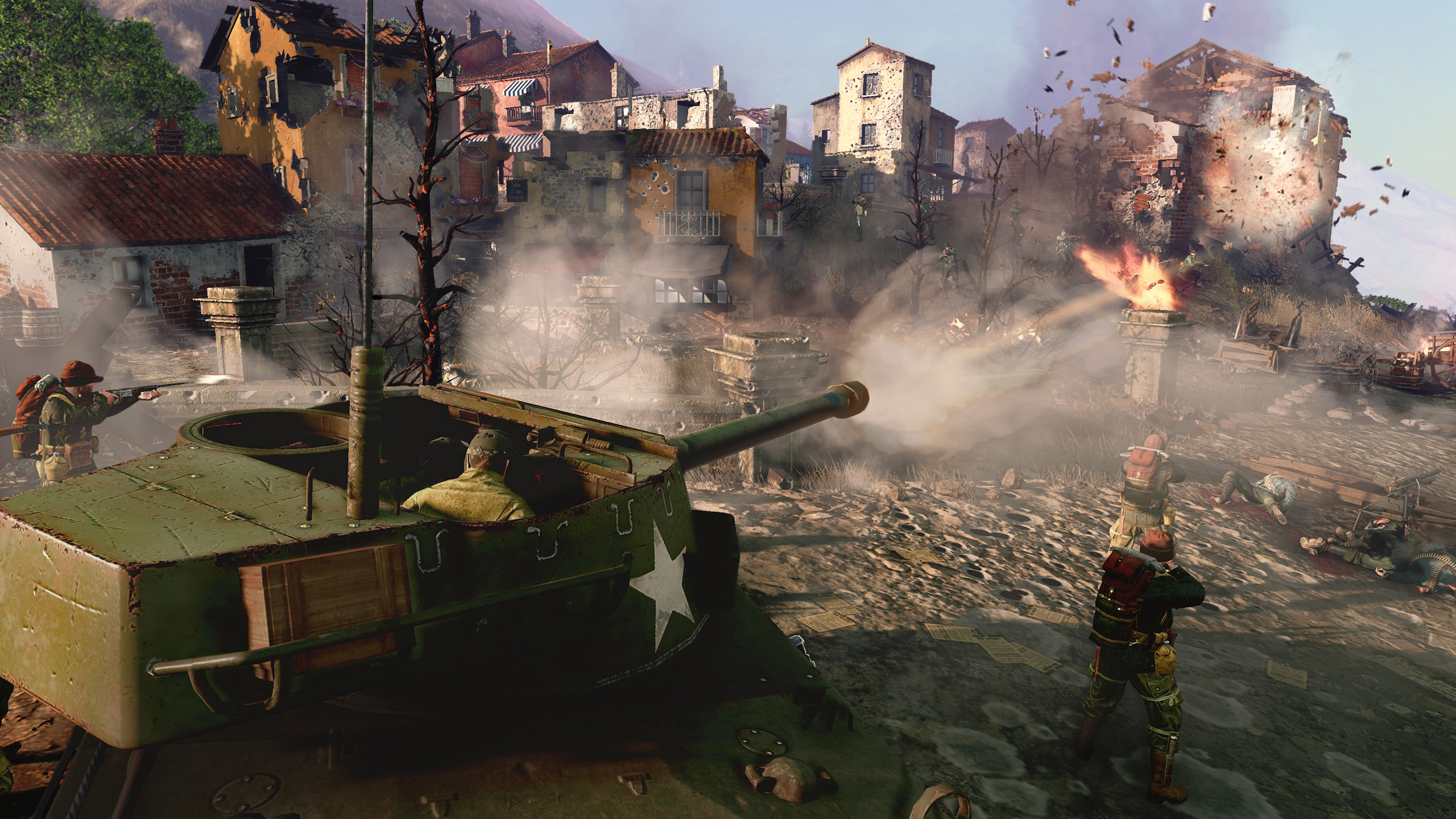
With my army in Naples, the straggly Italian countryside stretches out before them. Information technology's a chunky map, but only a small slice of the full Italian campaign map that we'll rag play at launch. All discrete bit of district offers something, whether it's more resources, another link in the supply strand—if the chain breaks, your swing-off units South Korean won't be at height efficiency—or memory access to aura and armed service forces. You don't ask to take all town in Italy, but I quickly found myself being seduced by the promise of total conquest and all the goodies that attach to it.
Information technology's a fetching map, too, with lots of pocket-size esthetical flourishes, like the Vesuvius regular close to Pompeii, huge and menacing, or the impinging Monte Cassino, which looks lovely even when it's surrounded by barricades, tanks and Associate in Arts guns. But Relic's likewise built it with an eye towards logistics and authenticity. Souvenir used early maps ready-made past the Royal Engineers to see where rail lines and roads were, which ones were functional, which ones could be used by tanks, so that journey through Italy, the routes you take and the obstacles in your way, are authentic to what that environment was at the prison term.
A-team
After spending a bit of time loving Italy, I go back to the war. My basic target is the closest airbase, giving me access to handy things like unsubstantial reconnaissance mission and paratrooper drops. Before storming the airbase, however, I undergo to decide my approach and pick my troops.
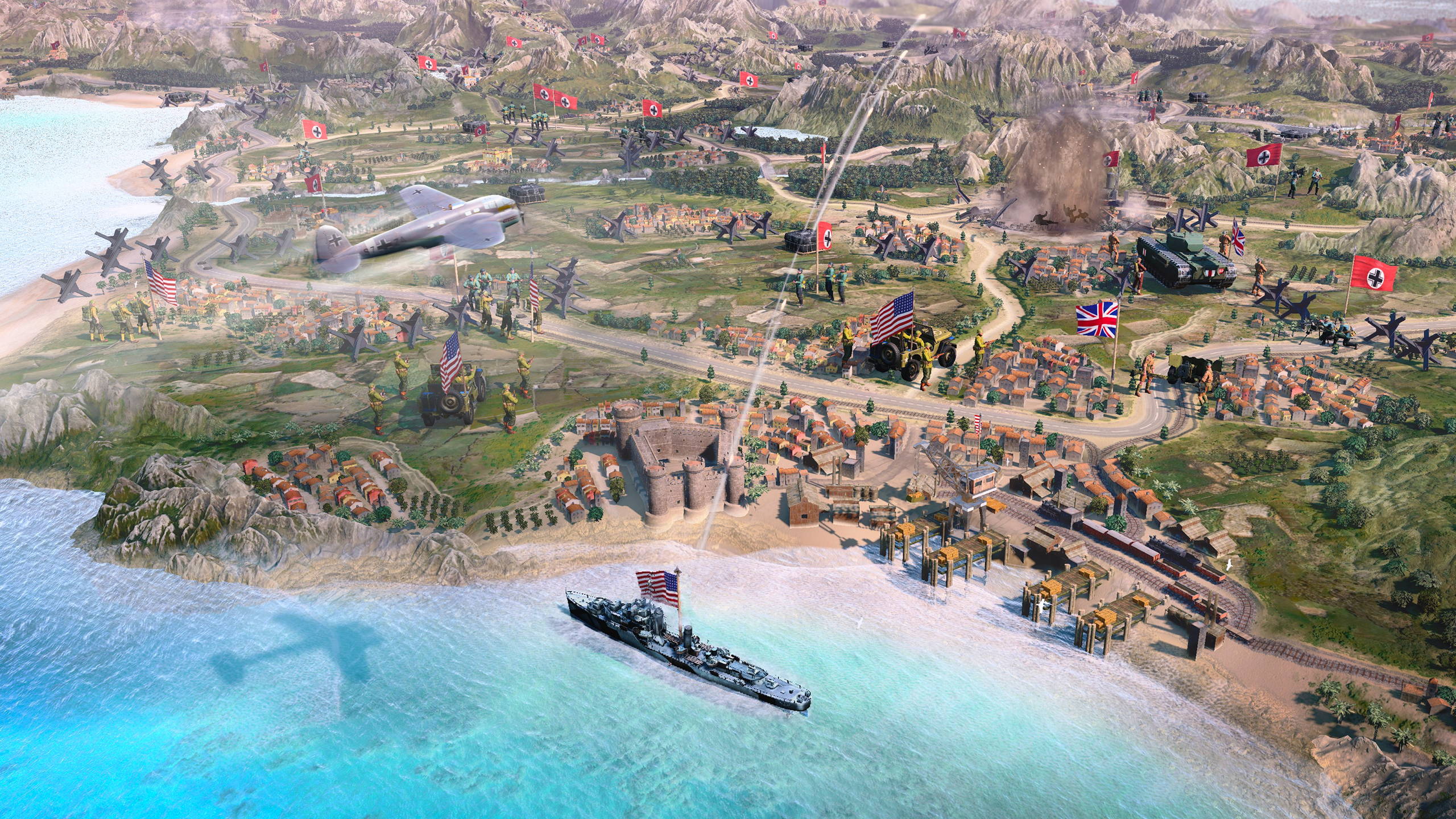
I've got several companies and detachments at my garbage disposal, and how I mix them will ingest a big impact along the conflict ahead. Companies are your primary units that you'll use to engage the foeman in real-time battles, from American mobile units to the devastating Indian gun. Across the war, they flummox points that can be spent on a assortment of upgrades allowing you to both endow and specify them. They're backed by detachments, which fire distillery march across the correspondenc independent of the companies, taking territory and getting into turn-settled fights. They keister't actually instigate real-time battles on their have, however, but if they are dear or intended to a companion when one starts, they give the axe provide a range of benefits.
Beingness a cautious commander, I resolve to bring a medical detachment with me for the airbase deputation. Happening the campaign correspondenc, this detachment can heal my infantry, and in missions this translates to a very helpful miniscule motortruck that passively heals any military personnel standing draw close IT. The truck can make up destroyed, naturally, and I turn protecting IT into a personal side mission. Battles also conjure up explicit optional objectives, like finding intel or fetching out a specified foe.
The medical truck proves to be a significant boon, especially conferred that it's been a while since I played Companion of Heroes. As helpful as it is, though, it pales in comparison to the tactical pause have. My reflexes ain't what they used to personify, thus the ability to pause the action mechanism at any time to proceeds commands and create waypoints is a genuine lifesaver, especially when I break up my forces up and find myself managing multiple battles. I consider myself an old, if lapsed, actor, but I experience myself continuing to use the tactical pause quite an a bit. It's just unceasingly rewarding to put together a plan and then come back to the action and see my lads tweak a perfectly-timed tactical manoeuver. IT's only available in singleplayer, though, so if you're planning connected getting perplexed into the PvP you South Korean won't want to rely on IT too much.
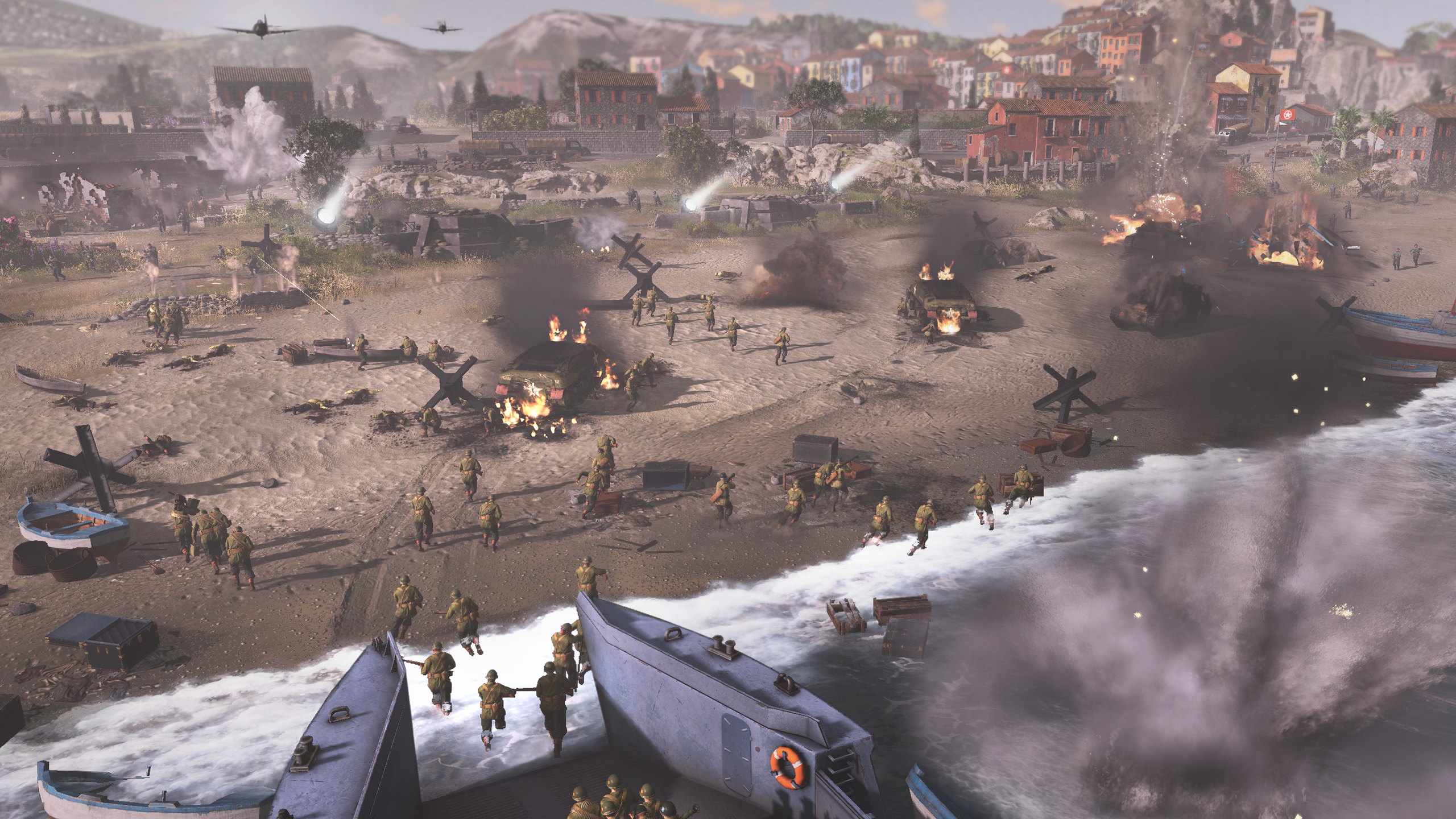
My first Fellowship of Heroes 3 mission is a delectation—a melodramatic battle lit awake by countless fires and explosions, courtesy of the airbase's many, many fuel-filled barrels. At nonpareil point, I have to charge across empty runways, using the occasional chuck to skin my troops, and when one isn't available, my poor Graeco-Roman deity truck. To the north, by the hangars, early soldiers duke it forbidden with entrenched Nazis as buildings are blown to smithereens. They get pinned down by a sniper in a tower, merely smoke grenades and rockets puddle short work of IT. Amid the fracas, I'm plonking down new buildings draw close my HQ, recruiting units, and upgrading my existing ones as they tier up up. When my engineers get flamethrowers, that's when we really start cooking. There's and so much going on that I forget altogether about the intel, but I still do to take the airbase, giving ME another tool to make my marching northwest, to Monte Cassino, just a little bit easier.
Nearly everything you can do in the RTS layer can be replicated in the turn-based campaign.
The level of demolition has ever been one of the things that's made Companion of Heroes stand out, so naturally Relic has given a great deal of attention to the scheme. Relic's artists rich person worked tirelessly to build stunning Italian villages that you won't be able to stop yourself from mercilessly destroying. I feel a small bit guilty seeing these picturesque locales decreased to debris and craters, but the destruction scheme is just a delight to behold.
Every projectile feels tangible and deadly when it's pounding walls to dust, and there's a grim beauty to all the devastation. Sometimes it feels like you're building a warzone sort o than destroying a town. And objects don't just have two states—they aren't simply standing or destroyed. The system is bit-by-bit and modular, telling the story of how things were blown up. And it affects everything, from foliage to tanks, though it's obviously most notable when a building is taking a pulsating. There suffer been practical improvements, likewise, so now fallen masonry can be used atomic number 3 cover, and Relic's little around with a system where soldiers might get crushed, or dodge out of the means, when it falls. And if the thought of all these demolished buildings is making you flavour sad, you stern mitigate some of the devastation by using the new breach scheme to get enemies out of buildings instead of levelling them. Sink a smoke grenade and then tell your troops to run to the door and they can toss in a grenade and rush the enemy, OR better yet, fill the inner with fire from a flamethrower. Enemies will try to flee, just that's wherefore you stick many troops at the back.
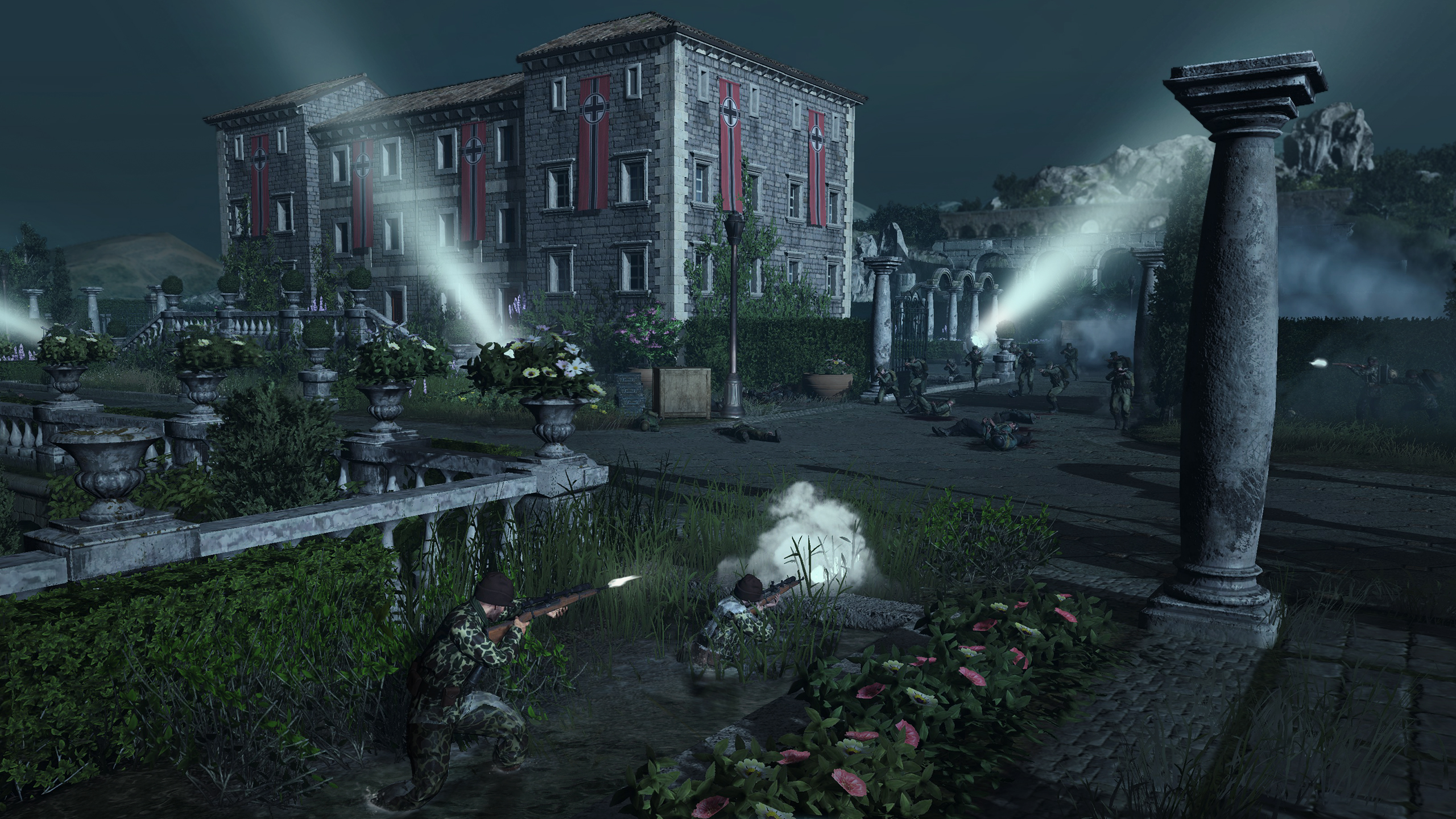
Emboldened by my first triumph, I step into my second crusade with a confident swagger. I've bumped into an enemy company, kicking off a haphazard clash. Only few skirmish maps are available in this build, though the changing forces and objectives mean that, level after two days of playing, I'm still enjoying them. My first base clash, though, doesn't quite ecstasy as planned. My enemy and I set out at opposite ends of the correspondenc and we're tasked with simply pickings territory, particularly a trio of triumph points. Unfortunately, I underestimate the speed of my foe's advance and sadly observe myself cragfast fighting over one victory point as a relentless tide of Germans assault it. They win.
Second chances
If this had been Company of Heroes 1 or 2, that would have been it for me, but in this World Warfare 2 sandbox I bear to swallow my failure—and that also gives me a chance for retaliate. While my company takes some scathe, information technology survives, and the enemy gains no more ground. In point of fact, information technology's actually taken more damage. It might have North Korean won the skirmish, but it was a Pyrrhic triumph. IT's also thinkable to completely destroy an enemy company or attachment ahead the battle begins. Units can substitution fire once-per-turn happening the campaign map, and artillery strikes from your companies OR naval support hind end make fast work of them, deliverance clip and the lives of your troops.
Plenteousness many skirmishes will accompany the bespoke missions at launch. As an unashamed turtler, I'm specially happy to hear that proper defensive missions will be in the mix, giving you clock to set up your fortifications and lay traps. Then there are the many unusual modes, care skirmishes where you motive to route and and so chase them so nobody can escape. Brutal. There's still time for the team to explore more skirmish themes, too, and they seem eager to experiment. Ideas like bridge battles get thrown around, and I suspect that once many players start testing and throwing their feedback into the pile we'll see that leaning of possibilities grow.
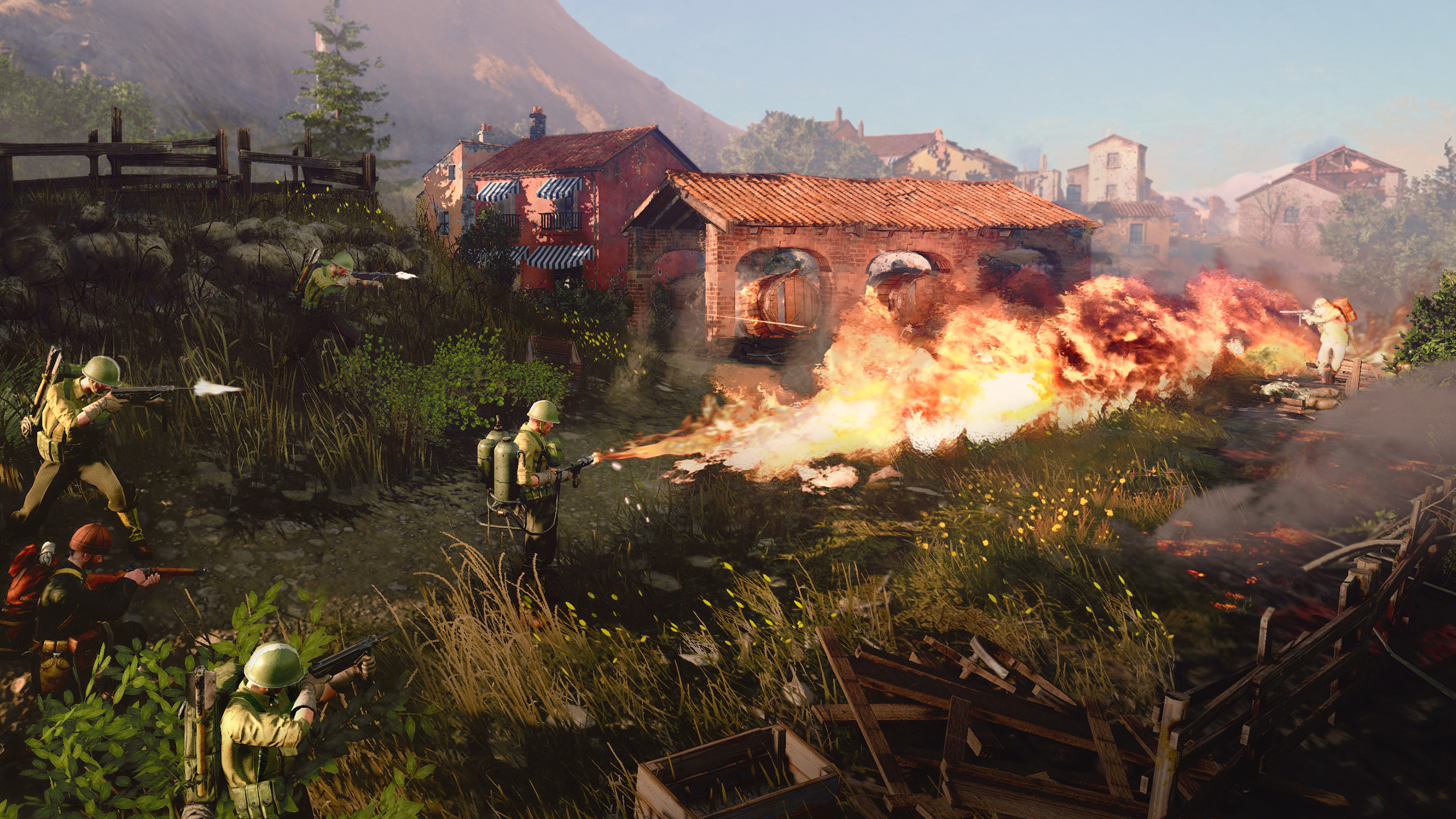
As I nark work liberating Italia, some chums chime in. I've got a trinity of advisors, representing the British, US and Italian partisan forces. These characters give the war a facial expressio, along with potential drop upgrade paths, moral conundrums and whatever internal tension. The most stimulating among them mightiness be the partisan advisor, who reflects the civilian contributions to the war, and their toll. When my American bud tells me to bomb Monte Cassino, to make our assault easier, his denominational counterpart warns that there might be civilians hiding inside the building we're targeting, advising me to send on in partisans first to make a point. Picking a itinerary doesn't always intend the other ones suddenly disappear, and you can try to keep everyone happy, but there volition exist some occasions where you have to pick a side.
The Nazis aren't faceless adversaries, either. Enemy commanders will have got Three-toed sloth personalities that inform their tactics, and may oppose differently contingent the situation—a commander on the edge of obliteration with seemingly nothing to lose might become ultra aggressive and micturate you fight harder for every kill. Personality traits mightiness follow invisible at the start, simply befriending partisans allows you to send them on information gathering missions, among others, giving you the lowdown connected a foe.
During my marchland N, I get alerted to the presence of a special named opponent and nemesis of the partisans, General Taube, prima to a hunt for this deadly tank commanding officer. There are individual locations where he might be hiding, but finished a separate lateral delegation I'm able to uncover intel that narrows it down. Our first and final exam meeting takes place in a sincere-time tank bash around a settlement, culminating in what almost feels like a boss battle, his intimidating Tiger II heavy tank against my considerably more vulnerable troops. I lay over traps, hide my soldiers everywhere, set up killzones where anything wandering into them will immediately glucinium blown to smithereens, and nonentity goes according to plan. It's a glorious mess. I ingest him out, but the town is debris.
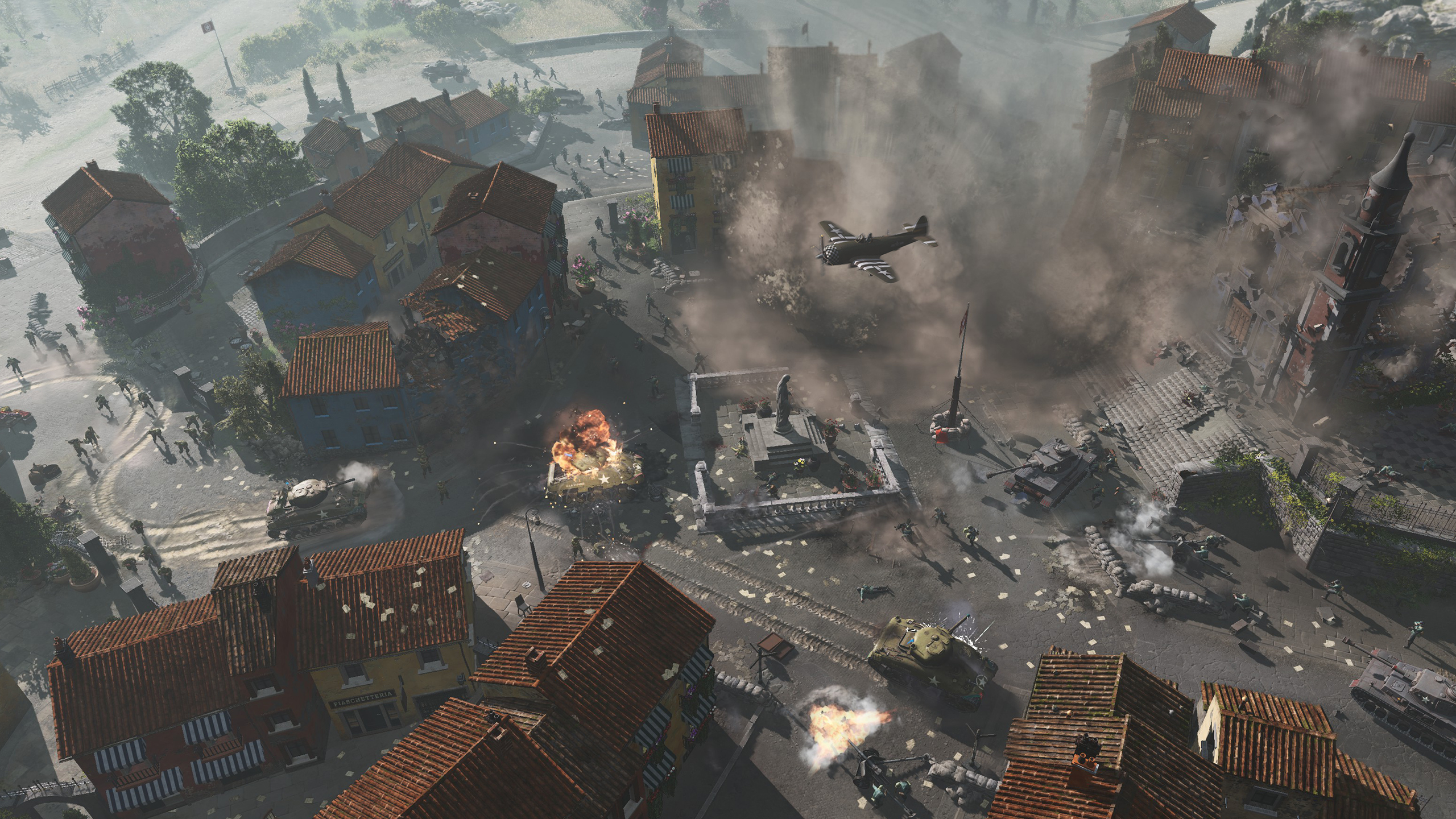
With Taube's defeat, I feel like I can probably pack Three-card monte Cassino. I've already liberated most of this section of Italia, and that's the last titanic challenge left. Since I opted to non flush i the place, the Germans are healthy secure and waiting for me, merely leastways they don't have any backup from Taube and his tanks. It's a vast correspondenc, dominated by a big hill and unitary chief road, which the foeman forces are plain keeping a close eye happening. Learned they'll glucinium light along tanks, however, I come to with an armoured company, and it proves to be the right call. The journey up that mountain is slow and torturing, and at the top I notice I have absolutely No infantry leftover. What I do have, however, is Little Phoeb Churchill tanks, and boy do we receive some fun. The picturesque setting is reversed into craters and detritus, quite a lot of it thanks to me, but I lav't palpate sad. I've condemned Monte Cassino.
Relic estimates that it should consume around four hours to complete the slit I was scrap through. I played for 11. There were some better-known bugs and performance issues slowing me down towards the end, but I really spent so long in Italy because I didn't want to finish the war. There was ever one Sir Thomas More skirmish waiting for me, one more region needing to be liberated, another system demanding to be experimented with. And since then, I've been waiting impatiently to return. Thankfully, scorn the 2022 release date, information technology's playable right now. A pre-alpha demonstration is available on Steamer, and you buttocks blow raised tanks and rift buildings with flamethrowers until 7 pm PDT on August 2/3 am BST on August 3.
Source: https://www.pcgamer.com/company-of-heroes-3-is-a-world-war-2-sandbox-with-the-scale-of-total-war/
Posted by: mcalisterandister.blogspot.com



0 Response to "Company of Heroes 3 is a World War 2 sandbox with the scale of Total War | PC Gamer - mcalisterandister"
Post a Comment